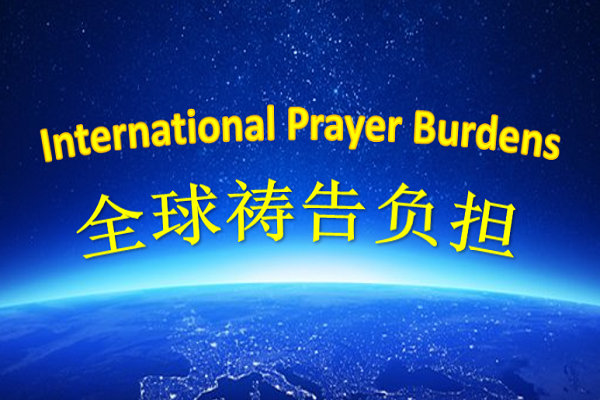Balkans
Greece, Albania, Bulgaria, Croatia, and Serbia
Map of the Balkans showing lampstands | © Amana Trust
(click on or hover over the map to view map labels)
The contents of this page are:
Greece
The first place the gospel was preached in Europe was in Greece (Acts 16—18). During the second journey, Paul and his co-workers went to Philippi in the Roman province of Macedonia, which today is in northern Greece. After Lydia and her household and the household of the Philippian jailer were saved, Paul and Silas journeyed to Thessalonica (current-day Thessaloniki) and Berea (Veria). Travelling south, Paul preached the gospel at the Areopagus in Athens and from there went to Corinth, where he met Aquila and Priscilla.
Paul and the brothers revisited Greece in the third ministry journey (Acts 20:2-6). The widespread use of the Greek language in the Roman Empire meant that the New Testament was written in Greek and also facilitated the spread of the gospel. Eight books of the New Testament were written in Greece: Paul wrote Romans, 2 Corinthians, Galatians, 1 and 2 Thessalonians, 1 Timothy, and Titus; and John wrote the book of Revelation on the Greek island of Patmos. Five Epistles were written to the churches in this region as well (1 and 2 Corinthians, Philippians and 1 and 2 Thessalonians).

The Journeys of Paul | © Living Stream Ministry.
Used with permission. Do not duplicate.
As part of the Roman Empire, Greece was Christianized after Constantine made Christianity the state religion. After the fall of the Roman Empire tensions between the eastern and western parts of the Roman Catholic Church culminated in the “Great Schism” or the “East-West Schism” in 1054, which saw the Eastern Orthodox Church (centered in Constantinople in present-day Turkey) split from the Roman Catholic Church. This was the first major division from the Roman Catholic Church. Greece has been, from that time, a predominantly Eastern Orthodox Christian country and thus was not strongly influenced by the Reformation movement in Europe during the sixteenth and seventeenth centuries. However, some Calvinist teachings were briefly adopted. In 1638 the first translation of the New Testament into modern Greek was published.
In relation to the Lord’s second coming, Greece is a vital place. The prophecies in Daniel and Revelation reveal that it is likely that the Antichrist will come from present-day Greece, an area of the eastern Roman Empire. Thus, it is important to watch and observe the events in Greece. In the Life-study of Ephesians (1984) Brother Lee says, “The Lord began from Jerusalem and then spread the church to Greece and Italy. I believe that He will also go back to Jerusalem by way of Italy and Greece” (p. 665). Based on this fellowship, saints have been endeavoring to raise up small lampstands in Greece by going there to serve and to study since the 1980s. In 1997 two couples migrated to Thessaloniki and later moved to Athens. In the following years more saints moved to Athens and from 2014 to 2016 several families migrated to Thessaloniki. As of 2016, there are more than thirty saints meeting in these two localities in Greece.
Albania
Albania is a small country in the southwestern part of the Balkan peninsula. During Roman times, it was part of three Roman provinces, including the province of Macedonia. It is likely that Paul visited Albania on one of his journeys, since it was part of Illyricum (Rom. 15:19).
Although Albania was one of the first countries to have believers, it eventually came under Ottoman rule, and the major religion became Islam. However, a significant Christian minority remained. After the collapse of the Ottoman Empire, Albania became independent in 1912, and after World War II it came under Communism. While under Communist rule, religion was banned in Albania.
Communism fell in 1990, and in March 1991, in fellowship with Brother Lee and Living Stream Ministry (LSM), three saints carried two thousand books and ten thousand tracts, along with postcards for requesting further literature, into Albania. In the weeks that followed, they received over seven thousand requests from five hundred one towns and villages. The response was so overwhelming that the saints sent a video presentation to Brother Lee. At that time he told a brother at LSM, “The Spirit is raining in two places on earth at this time—Russia and Albania.”
In October of 1992, again in fellowship with Brother Lee, one couple and a single brother (all graduates of the first class of FTTT) migrated to Albania. Using the principles of the God-ordained way learned in Taiwan, within 2 years there were twenty saints regularly meeting and preaching the gospel of the kingdom. The last major conference was held with a serving brother from Southern California in March 1996. There were thirteen baptisms and forty-five in attendance.
The next year, due to Albania falling into complete anarchy, the serving ones were airlifted out of the country, and the work stopped for some years. However, during the four and a half years there, two of the best translators in the country produced a good number of books and hymns. Some of the local saints remained in the country and faithfully pursue the Lord to this day. They have sent their children to the Poland camp yearly by means of the fellowship with the other European countries.
Presently there is a self-supporting serving couple (both graduates of the FTTA) with their two children in the capital city, Tirana. They meet regularly with some of the original saints as well as a number of new ones and treasure the fellowship with the churches in the Balkans.
Bulgaria
Since the apostle Paul’s journeys in the first century, there have been believers in this area. Southern Bulgaria constituted part of the Roman province of Macedonia, which Paul first visited in Acts 16. In A.D. 863 King Boris I established Christianity as the state religion of the Bulgarian Empire. Boris I used the tensions between Constantinople and Rome to set up a national independent church, which adhered to Eastern Orthodox Christianity. In the fourteenth century Bulgaria was conquered by the Ottoman Empire. Despite several forced Islamization campaigns, some Bulgarians remained Christians. In 1878 Bulgaria won independence from the Ottomans through military intervention by the Russian Empire. After gaining this independence Protestant missionaries from the US had free access in Bulgaria and, over the years, managed to gain a steady following. In 1871 the Union of Evangelical Churches produced a translation of the Bible into modern Bulgarian, which served as a basis for later Protestant translations of the Bible. After Bulgaria came under Communist rule in 1945, religion was brutally suppressed. From 1945 to 1989 all churches were closed and many spiritual leaders and believers were imprisoned by the Communist government. Many believers had to pay the ultimate price for keeping their faith. After the fall of Communism in 1989 religious freedom was re-established in Bulgaria. Currently, Orthodox Christianity is the country’s largest religion by number of followers, with a small minority of Muslims, Catholics, various Protestant denominations, and a significant number of the population not declaring any religious affiliation or belief.
For many years groups of believers in Sofia and Petrich have had contact with saints who were related to the Lord’s recovery. Starting in 2011, some Bulgarian saints from these two cities, from Portugal, and from the US began coming to the International Conferences in London and then to the one-week trainings in London. As a result of these visits and some saints visiting Bulgaria, many believers decided to pursue the way of the recovery. There is now an annual conference in Sofia and six Bulgarian saints have finished the Full-time Training in London. Today around forty saints are meeting in both Sofia and Petrich. Some books and The Holy Word for Morning Revival have been translated into Bulgarian. The saints’ hope is that many more books can be translated and spread to Bulgarian speakers in Bulgaria and abroad.
Croatia and Serbia
In the New Testament, a province in Croatia was mentioned by Paul in 2 Timothy 4:10, where he says that Titus had gone to Dalmatia. It seems that the gospel reached Croatia in the first century. Next to Split are the ruins of Salona, the ancient capital of Dalmatia, where the Roman Emperor Diocletian was born. It was an early center of Christian faith and also the site of major persecutions by the Roman Empire, especially at the hands of Diocletian. Later, under the rule of the Romans, Croatia became Catholic. In the sixteenth century, the work of Matthias Flacius Illyricus, a Lutheran reformer from Istria in present-day Croatia, influenced some to become Protestant, but Croatia remains mainly Catholic today.
Serbia was Christianized in the ninth century by the Byzantine Christian missionaries Cyril and Methodius. Like the other Slavic countries, Serbia is a predominantly Eastern Orthodox Christian country.
The entire Balkan peninsula was under the influence and control of the Ottoman Empire from the fourteenth to twentieth century, and today there is a Muslim minority in all of the countries, except Bosnia, Herzegovina, and Kosovo, where Islam is the majority religion. Slovenia, in the north, is mostly Catholic. Macedonia and Montenegro are predominantly Eastern Orthodox Christian countries. Religious differences have been a main factor in the regional tensions that resulted in violence in the 1990s.
During the Cold War, this area constituted Yugoslavia. Under Communism Yugoslavia was a strictly atheist state, but when the country began to break up in the 1990s, long-standing ethnic and religious problems resulted in a civil war from 1991 to 1995. The war was brutal and destructive, but the saints testify that it caused many to open their hearts to the Lord and also resulted in freedom of speech and religion in this region.
The ministry in the Lord’s recovery reached this area through free literature distribution. One Croatian couple graduated from the FTTL and by 2010 had translated the seven Rhema books for free distribution in ex-Yugoslavia. Since there was no distribution office on the ground and no saints living in the countries, the saints began to use Google Ads. The response was great, and thousands of people ordered the ministry books. Through the literature distribution the saints gradually developed contact with seeking ones from Serbia and Croatia. The first contacts the Croatian couple made was with seekers from Split in 2012, in Novi Sad in 2013, in Hvar in 2014, and in Osijek in 2015. This couple lived in Germany at the time and kept in touch with these seeking ones via Skype and email and regular visits from 2012 onward. In 2015 they moved to Split, initially for six months, because the hunger in the believers was quite astonishing. Eventually the saints in Split began to meet every day for the whole year. They took the ground and had their first Lord’s table meeting in April 2017. There are also saints meeting in Novi Sad, the second-largest city in Serbia. Today there are now around seventy ministry titles available in Serbo-Croatian. Last year in November the Croatian couple, who graduated from the FTTL, moved to Croatia’s capital, Zagreb, for the church life.



